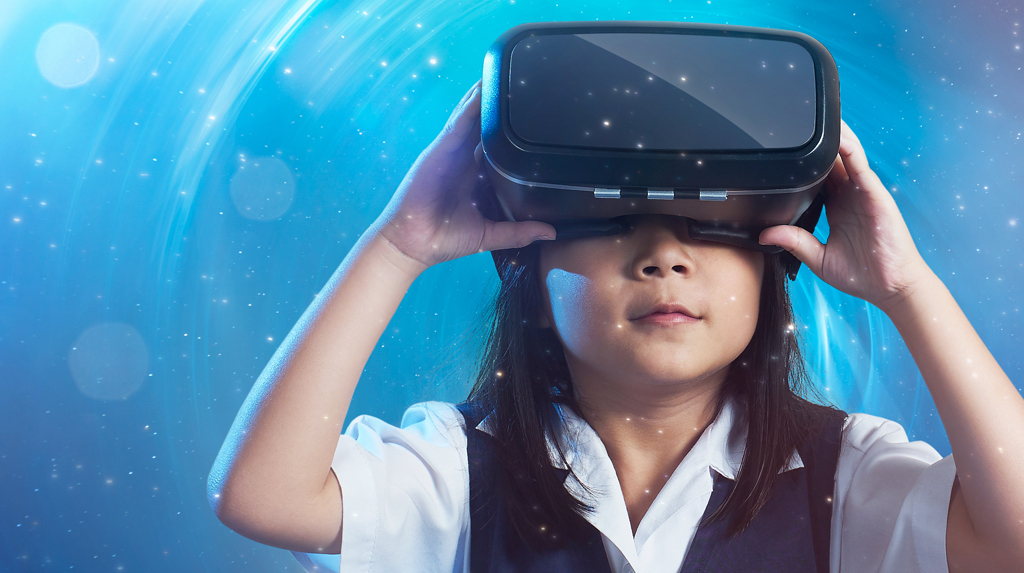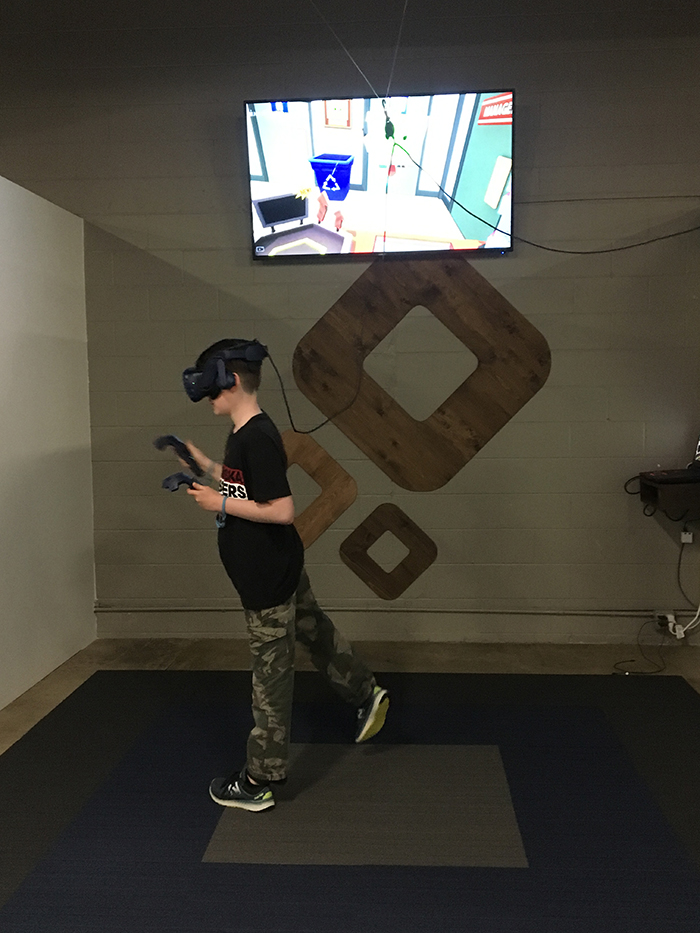Brief
Using Virtual Reality in the Classroom for Students on the Autism Spectrum
Connected Science Learning April-June 2019 (Volume 1, Issue 10)
By Wyayn Rasmussen, and Kate Drechsler

Virtual reality has seen rapid development in the first part of the 21st century, although it has been around for many years. Remember the old ViewMasters? And who could forget the first time a sea monster reached out to grab you while you were wearing your 3-D glasses in the movie theater? The video game industry has evolved and driven the development of virtual reality into homes and schools across the nation. With this in mind, Academy of Whole Learning (AOWL), a K–12 private school specializing in neurodiversity education, is bringing virtual reality into the classroom—with a focus on how it can enhance science learning and give students experience with cutting-edge technology.
Virtual reality offers the opportunity to enhance traditional instruction, especially when it comes to students with autism spectrum disorder (ASD) or related learning differences.
Sensory-friendly environment
First, virtual reality can provide a safe, sensory-friendly environment that allows instruction to be tailored to the needs of students with autism. Because individuals with ASD have difficulties with self-regulation and adjusting to sensory stimuli, it makes sense to adjust the auditory, visual, and vestibular stimulation to levels acceptable for the population that will be experiencing it. The primary difficulties facing people with ASD concern language, social skills, and repetitive/rigid behaviors. Through virtual reality technology, the environment can be made more predictable and address challenges with transitions, as well as difficulties with social interaction and perspective-taking.

Practice for social situations
Second, a virtual environment can provide repeated practice for social scenarios, which is important because no two social interactions are ever exactly the same. This ability to practice over and over again, and in different settings (i.e., attending a birthday party, sitting in the lunchroom, asking someone out on a date, buying groceries) may facilitate the generalization of the social competencies students are practicing in the virtual environment to everyday interactions.
Risk-free, higher-level thinking
Third, a virtual world allows students to apply skills, such as problem-solving, critical thinking, collaboration, iteration, and communication, in a risk-free environment that allows unlimited attempts at a task. For students with learning differences, repetition and consolidation are vital to ensuring that their learning is retained.
Highly motivating
Finally, technology is often highly motivating and rewarding for individuals with ASD. Virtual reality offers an engaging, interactive, and individualized platform for training and improving academic and social concepts in students with ASD.
Some of the learning experiences planned for our students include visiting the planetarium, riding on a spaceship high into the atmosphere to investigate the Moon and Earth, exploring the wonder and majesty of the ocean and its habitats, and coming face to face with some of the most awe-inspiring species on the planet. Further, Google Earth VR will put the whole world within a student’s reach. We believe that the sensory-friendly, nonjudgmental environment afforded by virtual reality technology will help us as educators better prepare young people with ASD to participate in the workforce and their communities.
Obviously, educators cannot rely solely on virtual reality to provide academic and social instruction, but it can be used as a vital tool to engage students with ASD, provide meaningful learning experiences, and increase academic, social, and emotional outcomes in new ways.
Wyayn Rasmussen discusses AOWL’s virtual reality lab.
About Academy of Whole Learning
An accredited and nationally acclaimed School of Excellence, Academy of Whole Learning is the only private school in Minnesota that is specifically designed for students with autism spectrum disorder or related learning differences. Founded in 2003 and initially serving six students, today AOWL has nearly 70 students and continues to grow. In addition to a K–12 school, Academy of Whole Learning provides clinical therapy services, afterschool and summer programming, and transition life skills for adults age 18–26. The school has award-winning teachers on staff, and a broad range of educational, sports, and personal development programs.
Wyayn Rasmussen (wyayn.rasmussen@academyofwholelearning.org) is executive director of Academy of Whole Learning in Minnetonka, Minnesota. Kate Dreschler (kate.drechsler@aowl.org) is a teacher at Academy of Whole Learning in Minnetonka, Minnesota, and the Minnesota Independent School Forum's 2019 Private & Independent Education K–8 Teacher of the Year.
Disabilities Inclusion Teaching Strategies Technology Informal Education


